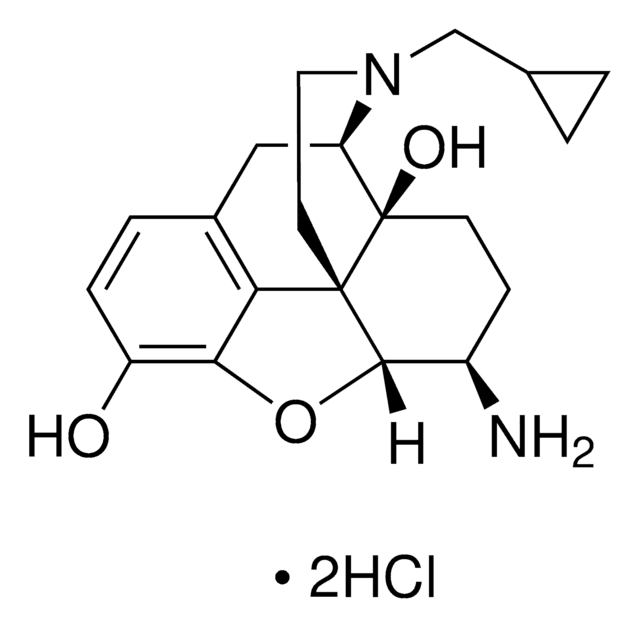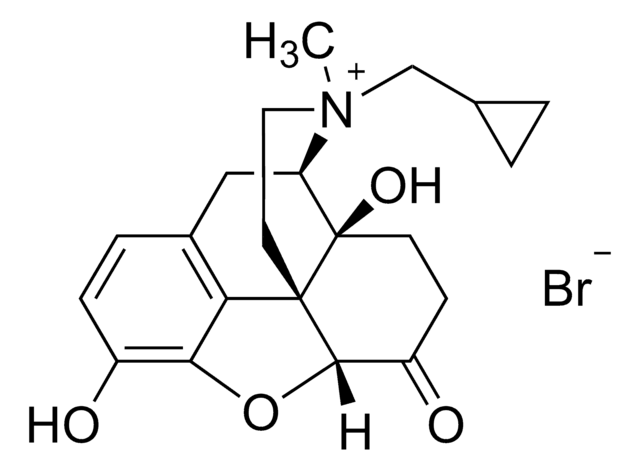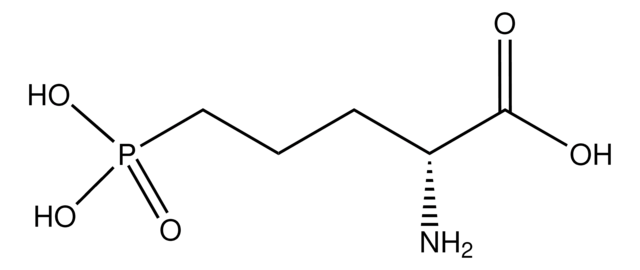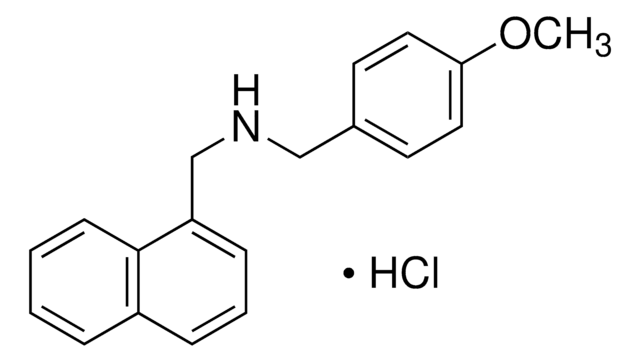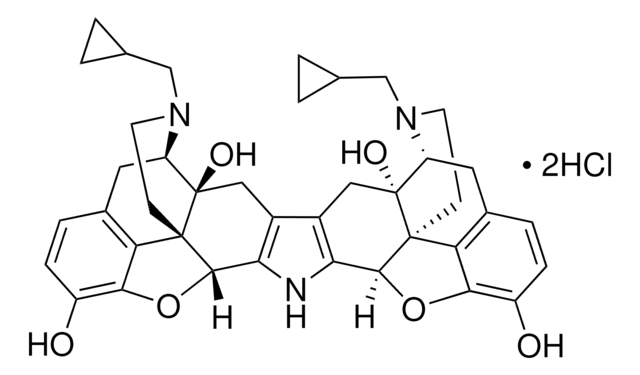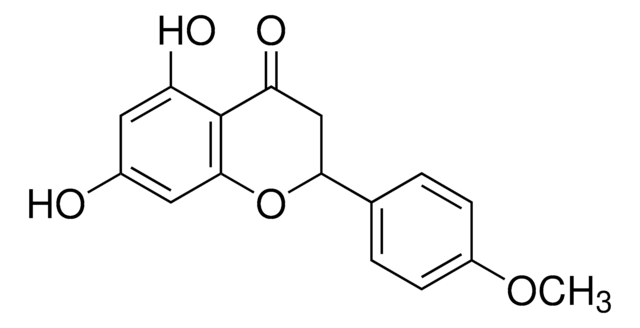SML0277
Methylnaltrexone bromide
≥97% (HPLC)
Sinónimos:
17-(Cyclopropylmethyl)-4,5α-epoxy-3,14-dihydroxy-17-methyl-6-oxomorphinanium bromide, MNTX, Methylnaltrexonium, Mrz-2663, N-Methylnaltrexone, Naltrexone MB, Quaternary ammonium naltrexone
About This Item
Productos recomendados
Quality Level
assay
≥97% (HPLC)
form
powder
storage condition
desiccated
color
white to beige
solubility
H2O: ≥5 mg/mL
shipped in
wet ice
storage temp.
−20°C
SMILES string
[Br-].C[N@+]1(CC[C@]23[C@H]4Oc5c(O)ccc(C[C@@H]1[C@]2(O)CCC4=O)c35)CC6CC6
InChI
1S/C21H25NO4.BrH/c1-22(11-12-2-3-12)9-8-20-17-13-4-5-14(23)18(17)26-19(20)15(24)6-7-21(20,25)16(22)10-13;/h4-5,12,16,19,25H,2-3,6-11H2,1H3;1H/t16-,19+,20+,21-,22?;/m1./s1
InChI key
IFGIYSGOEZJNBE-KNLJMPJLSA-N
Gene Information
human ... OPRM1(4988)
¿Está buscando productos similares? Visita Guía de comparación de productos
General description
Application
Biochem/physiol Actions
Features and Benefits
signalword
Warning
hcodes
Hazard Classifications
STOT SE 2 Oral
target_organs
Gastrointestinal tract
Storage Class
11 - Combustible Solids
wgk_germany
WGK 3
flash_point_f
Not applicable
flash_point_c
Not applicable
Elija entre una de las versiones más recientes:
Certificados de análisis (COA)
¿No ve la versión correcta?
Si necesita una versión concreta, puede buscar un certificado específico por el número de lote.
¿Ya tiene este producto?
Encuentre la documentación para los productos que ha comprado recientemente en la Biblioteca de documentos.
Artículos
We offers many products related to opioid receptors for your research needs.
Nuestro equipo de científicos tiene experiencia en todas las áreas de investigación: Ciencias de la vida, Ciencia de los materiales, Síntesis química, Cromatografía, Analítica y muchas otras.
Póngase en contacto con el Servicio técnico